
Understanding What is Google Map SEO
Understanding What is Google Map SEO
Most people are familiar with the blue dot that marks our location on Google Maps, but far fewer appreciate the mechanics and significance of being featured on Google Maps, especially from a business standpoint. Customers now expect to access faster and more accurate local business information, and companies, great and small,l face fierce competition for placement on that sought-after map. Amid this digital scramble, Google Map SEO emerges as one of the prime drivers of local discovery.
Every time someone searches “coffee shop near me” or “lawyer in Wellington,” the businesses that show up in the map results aren’t there by accident. Their inclusion is shaped by a complex, ever-shifting set of signals that together make up Map SEO — a discipline focused on earning the most visible and trusted spots in Google’s map listings.
What is Google Map SEO?
Google Map SEO is the process of optimising your business’s presence on Google Maps to increase visibility in local search results. Unlike traditional SEO, which focuses on improving your website’s ranking in organic search results, Google Map SEO is specifically designed to help your business appear prominently when users search for local services or products on Google Maps or in the local pack (the map listings that appear above organic results).
The purpose of Google Maps SEO is to ensure that your business is easily discoverable by potential customers in your area. This involves optimising your Google Business Profile, ensuring your business information is accurate and consistent, gathering positive customer reviews, and using relevant local keywords. Doing so increases your chances of being featured in the top map results, which can drive more foot traffic, phone calls, and enquiries to your business.
In summary, Google Maps SEO is a targeted strategy that helps local businesses stand out in map-based searches, connect with nearby customers, and gain a competitive edge in their community.
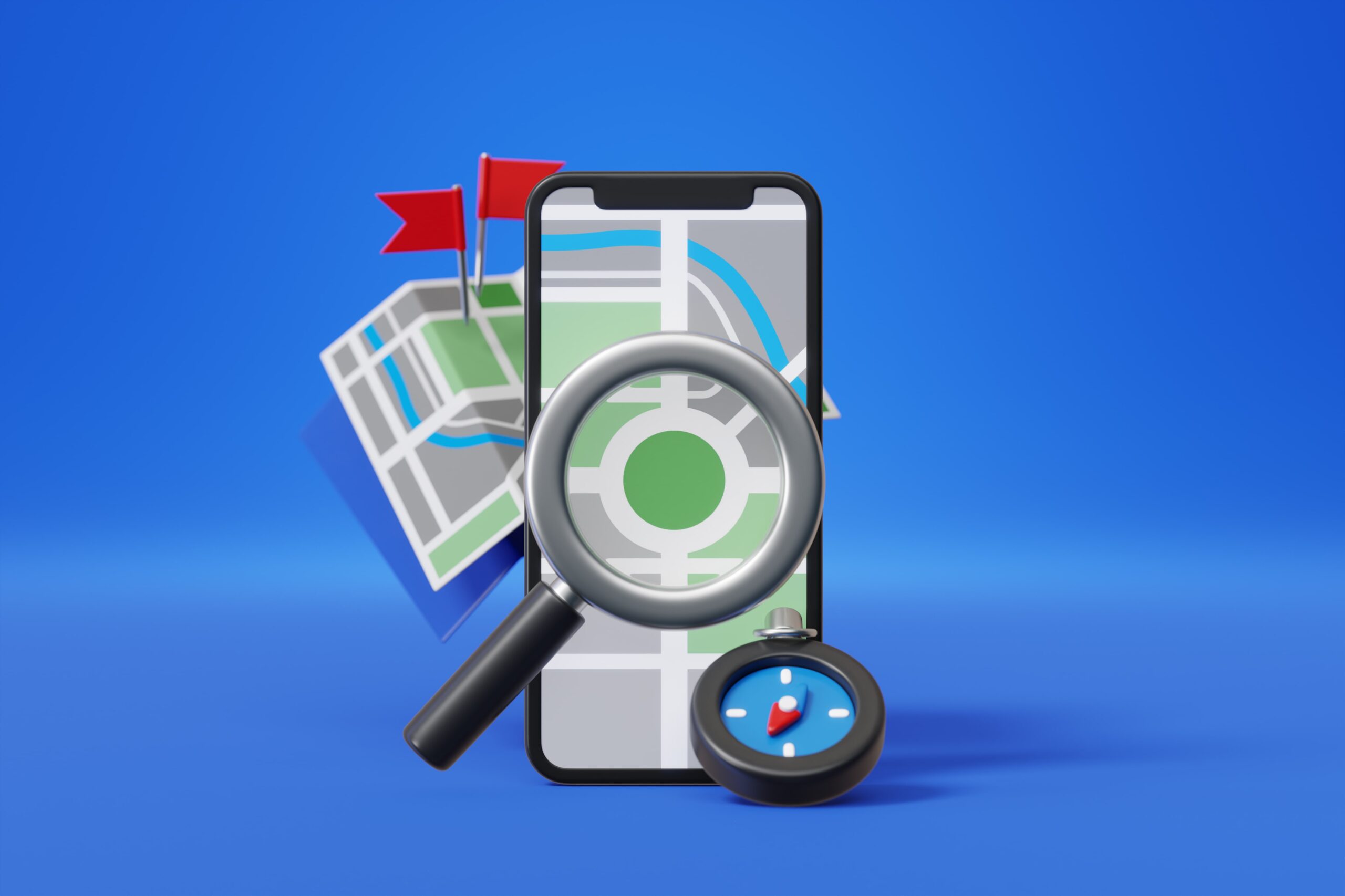
The Mechanics of Google Map Rankings
Imagine searching for a nearby mechanic after a car breakdown. The results that appear in the Maps section — often marked as the “Local Pack” at the top of Google search — are ranked differently from standard website results. Google evaluates hundreds of factors, but several consistently rise to the top when it comes to Map rankings:
- Proximity to the searcher’s location
- Accuracy and completeness of the Google Business Profile
- Consistency of name, address, and phone number (NAP) data across directories
- Quality and frequency of reviews
- Keywords used in reviews and business descriptions
- Volume of interactions, including calls, direction requests, and website clicks through the map
High performers in these areas rise above their competition, winning visits, calls, and ultimately, customers.
Table: Key Ranking Factors for Google Map SEO
| Ranking Factor | Weight/Influence | How to Optimise |
|---|---|---|
| Proximity to Searcher | High | Choose business location strategically |
| Google Business Profile Completeness | High | Add all details & photos |
| Reviews (Quality & Quantity) | High | Encourage and reply to reviews |
| NAP Consistency Across Directories | Medium | Standardise across all platforms |
| Google Map Citations | Medium | Build consistent citations on reputable local and industry directories |
| On-Page Keywords | Medium | Use clear, relevant keywords |
| User Engagement Signals | Medium | Encourage check-ins & actions |
Why Does Google Map SEO Matter?
For a local business, showing up in those top three map spots can feel like winning the lottery. Research over the last few years shows that the “Local Pack” attracts roughly 44 percent of all clicks made on the search page. People often treat these results as more trustworthy and up-to-date, since Google is perceived to have vetted and mapped each listing. This trust translates directly into business growth: more foot traffic, more calls, more bookings.
Google Map SEO is not just for shops or cafes, either. Accountants, plumbers, dentists, gyms, and countless other service providers all benefit from prominent map placements. In fact, many service-based firms with no walk-in location can still rank highly through careful profile management and strong customer engagement.
Optimising for Google Maps isn’t only about higher visibility, either. There’s the added benefit of improved user experience. Accurate listings prevent misdirected customers and build confidence, while timely responses to reviews reinforce a sense of responsiveness and approachability.
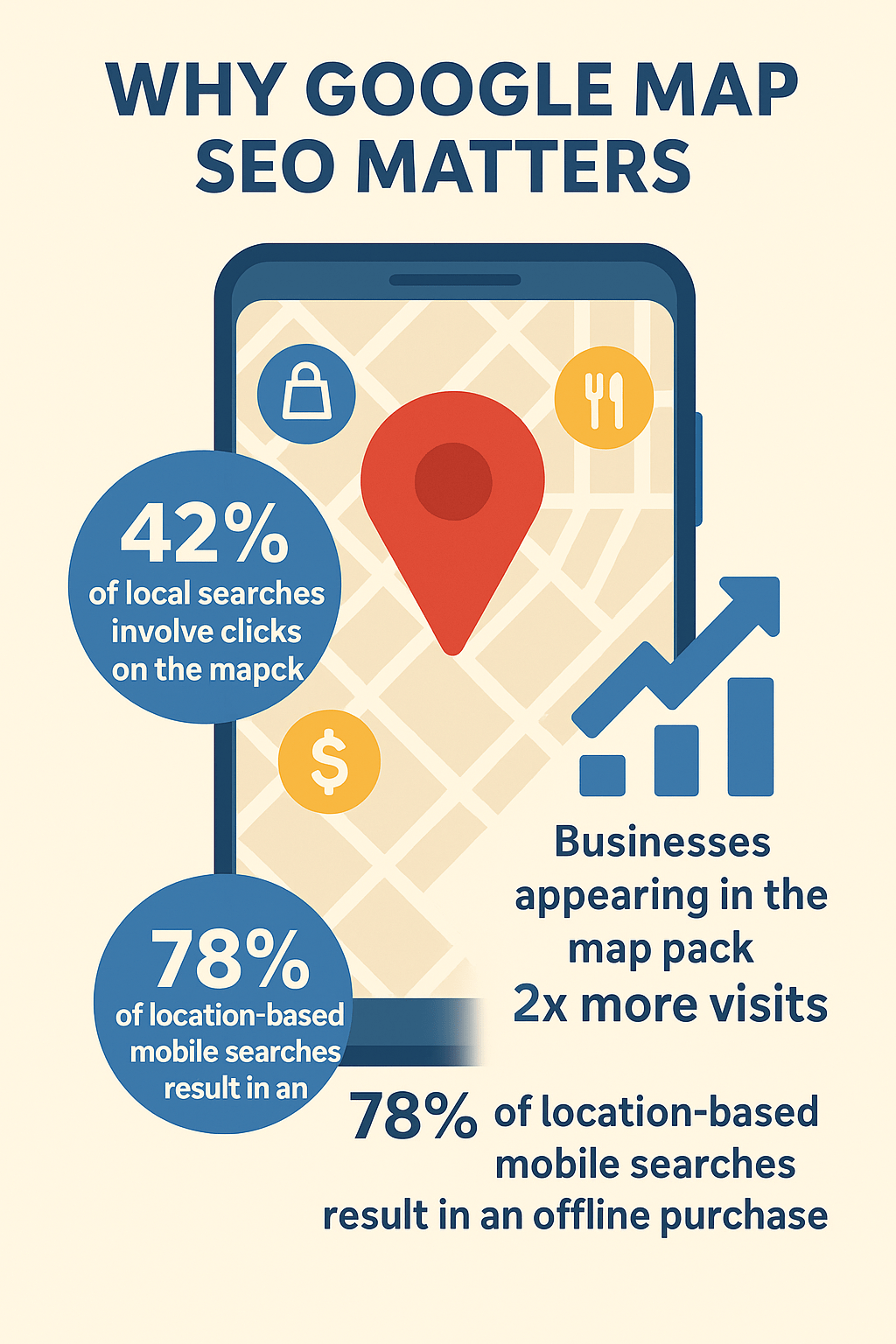
Managing Multi-Location Businesses on Google Maps
For franchises and businesses with multiple locations, Google Maps SEO presents unique challenges and opportunities. Consistency, efficiency, and local relevance are crucial to ensuring every branch stands out in its community while maintaining a unified brand presence.
Best Practices for Multi-Location Optimisation
- Maintain Consistent NAP Information: Ensure each location’s Name, Address, and Phone number (NAP) are accurate and formatted consistently across all listings and directories. This builds trust with both Google and customers.
- Customise Each Profile: While brand consistency is important, tailor each Google Business Profile (GBP) with location-specific details—such as unique descriptions, local photos, and relevant business categories. Highlight local staff, community involvement, or special services to connect with nearby customers.
- Standardise Branding Elements: Use consistent logos, brand imagery, and messaging across all locations to reinforce your identity and make your listings instantly recognisable.
- Encourage and Manage Reviews by Location: Prompt customers to leave reviews for the specific branch they visited. Respond to feedback individually, addressing local experiences and concerns to demonstrate genuine engagement.
- Monitor and Audit Regularly: Schedule periodic audits to ensure all profiles are up-to-date, especially after changes in hours, services, or contact details. This prevents outdated information from undermining your credibility.
Leveraging Bulk Management Tools
Managing dozens or hundreds of locations manually is inefficient and prone to error. Google Business Profile Manager (formerly Google My Business dashboard) streamlines the process:
- Location Groups: Organise your locations into groups for easier management, allowing you to assign user permissions and delegate responsibilities across teams.
- Bulk Upload and Edits: Use spreadsheet templates to add or update multiple locations simultaneously. This is especially useful for seasonal changes, promotions, or rebranding efforts.
- Centralised Monitoring: Track performance metrics, reviews, and profile completeness for all locations from a single dashboard. Quickly identify and address underperforming branches.
- Automated Alerts: Set up notifications for new reviews, profile changes, or data inconsistencies, ensuring you can respond swiftly and maintain high standards across the board.
Optimising for Local Relevance at Scale
- Local Landing Pages: Link each GBP listing to a dedicated local landing page on your website, optimised with unique content and keywords for that area. This boosts both map and organic search visibility.
- Community Engagement: Encourage each location to participate in local events, partnerships, or sponsorships. Highlight these activities in posts and photos to strengthen local connections.
By combining consistent brand management with local customisation and leveraging bulk management tools, multi-location businesses can maximise their visibility, reputation, and customer engagement across every market they serve.
The Anatomy of a Winning Map Listing
Businesses vying for prime Map visibility must focus on several intertwined elements:
1. Google Business Profile (GBP) Accuracy
A half-completed profile hurts trust and can prevent any meaningful ranking. At the most basic level, every field within the GBP (formerly Google My Business) must be up-to-date:
- Name, address, and phone number (ensure these match other online listings)
- Opening hours (including public holidays and special events)
- Service areas or delivery zones
- Business categories (choose the most relevant)
- High-quality photos showcasing the exterior, interior, staff, and products
Often, it’s the extra details — things like a “women-led” badge, attributes like “wheelchair accessible,” or a thorough description — that give a listing the edge.
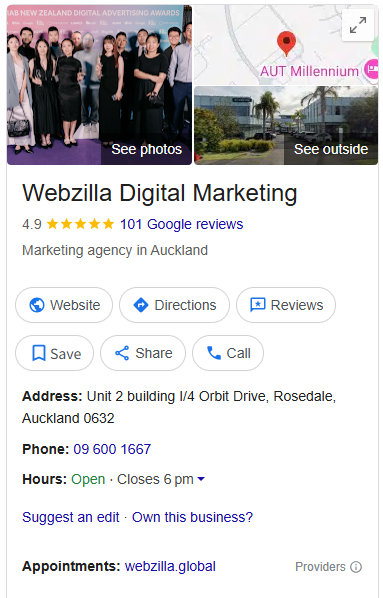
2. Reviews and Responsiveness
Reviews sit at the heart of Google Map SEO. Not only do quantity and average star rating influence rankings, but the language used in reviews and the frequency of fresh reviews are factors as well. A pattern of prompt, thoughtful replies to both praise and criticism signals a responsive, trustworthy business.
Some guidelines for cultivating healthy reviews:
- Gently remind customers to leave feedback, especially after a positive interaction
- Avoid incentivising reviews, which is against Google’s terms
- Address every review with a personal touch, even the negative ones
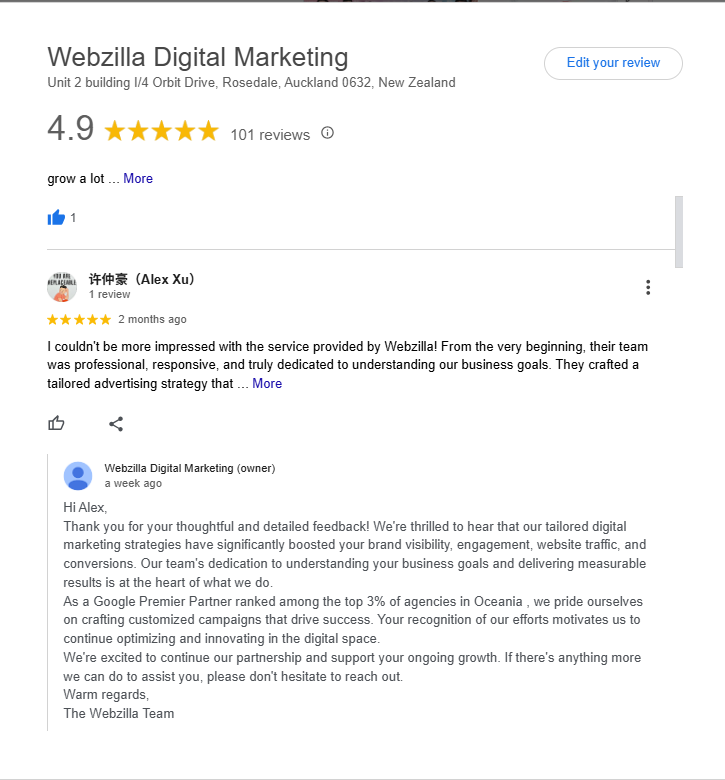
3. NAP Consistency
Google checks if a business’s details match across the web. Discrepancies between what’s on the website, social profiles, and industry directories cause confusion for both algorithms and potential customers. Business owners should periodically audit their listings to make sure every mention is up-to-date and accurate.
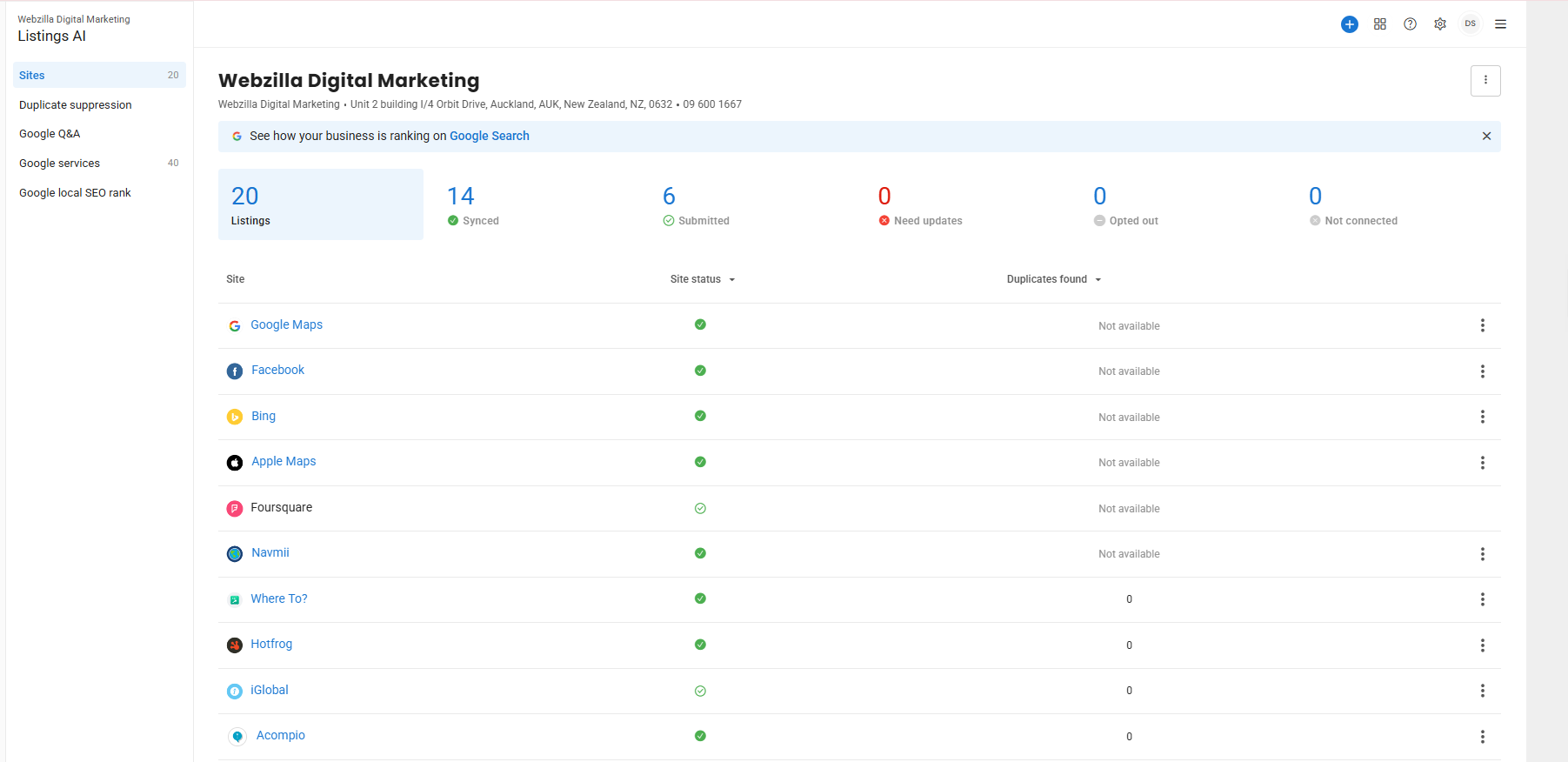
4. Keywords and Business Descriptions
While keyword stuffing won’t help, naturally weaving the right keywords into your business description and service list increases the relevance of your listing. Think about what potential customers type in: “gluten-free bakery Auckland” or “emergency electrician Hamilton.” Address those queries directly and reflect them in content and reviews.
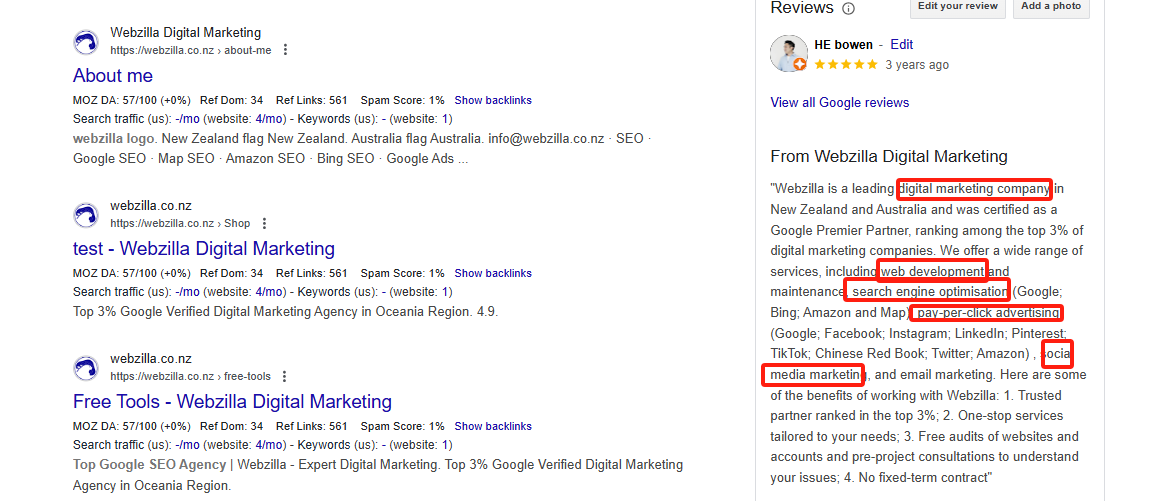
5. Engagement and Interactions
Signals like direction requests, click-to-call actions, and website visits all indicate popularity and local relevance. Some businesses run limited promotions or update posts regularly to prompt engagement, which can move the needle in competitive categories.
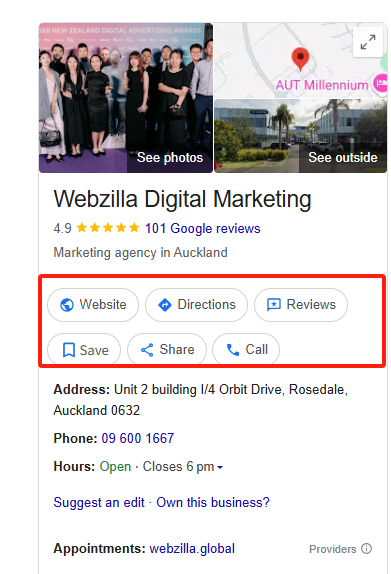
Proven Tactics for Climbing the Google Maps Ladder
Effective Google Map SEO isn’t one-size-fits-all. Still, a handful of practical steps apply to most businesses aiming for top-tier visibility:
- Claim and verify your Google Business Profile immediately
- Upload a minimum of five high-resolution photos, updated seasonally
- Respond to every customer review promptly and genuinely
- Post business updates, offers, or events at least once a month
- Use reputable directories such as Yellow, Finda, or local chambers of commerce to reinforce your NAP details
- Get local press mentions or backlinks whenever possible
Many businesses also monitor performance metrics within their GBP dashboard. Data like “how customers search for your business” and “where customers view your business on Google” can shape future tactics.
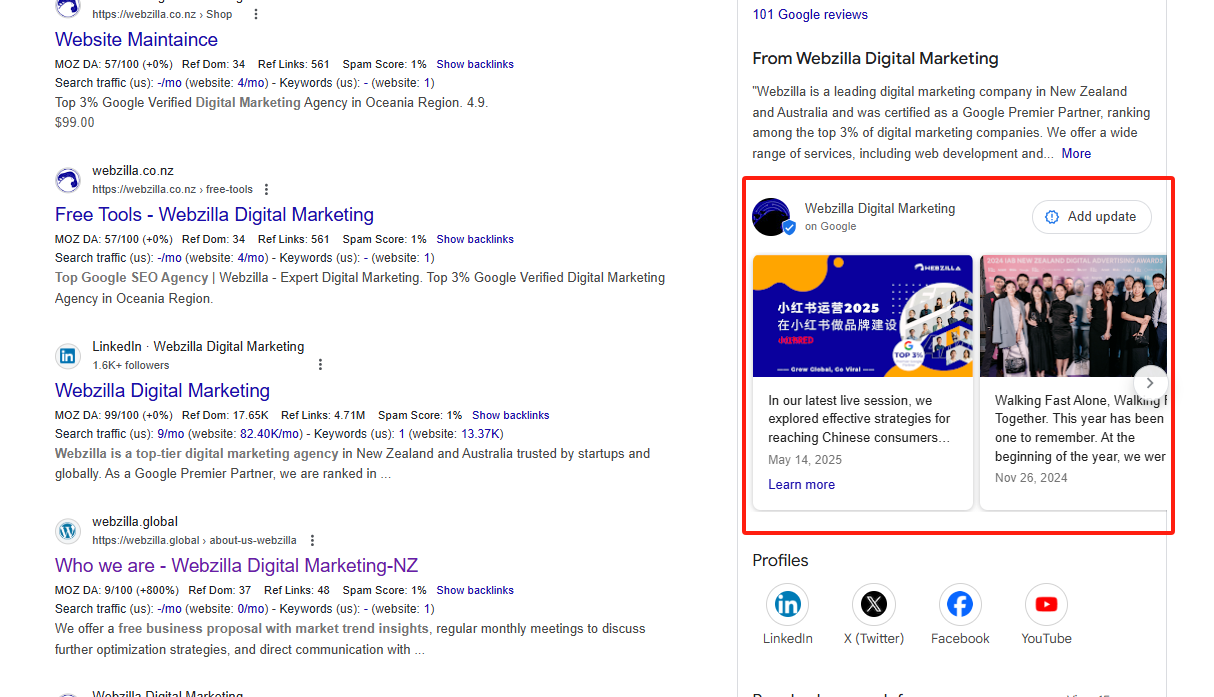
Tracking and Analytics for Google Map SEO
Understanding the impact of your Google Map SEO efforts is essential for continuous improvement and sustained growth. By leveraging the right analytics tools, you can gain actionable insights into how customers find and interact with your business on Google Maps—and make data-driven decisions to enhance your local visibility.
Measuring Performance with Google Business Profile Insights
Google Business Profile (GBP) Insights offers a wealth of data about your listing’s performance. Key metrics include:
- Search Queries: Discover the exact terms people use to find your business, helping you refine your keywords and content.
- Customer Actions: Track how many users call your business, request directions, visit your website, or message you directly from your profile.
- Photo Views: See how often your photos are viewed compared to similar businesses, highlighting the importance of visual content.
- Where Customers View Your Business: Understand whether customers find you via Google Search or Google Maps, allowing you to tailor your optimisation efforts.
- Direction Requests: Identify the geographic areas where customers are searching for directions to your business, revealing potential new markets.
Regularly reviewing these insights enables you to spot trends, identify strengths, and uncover opportunities for improvement.
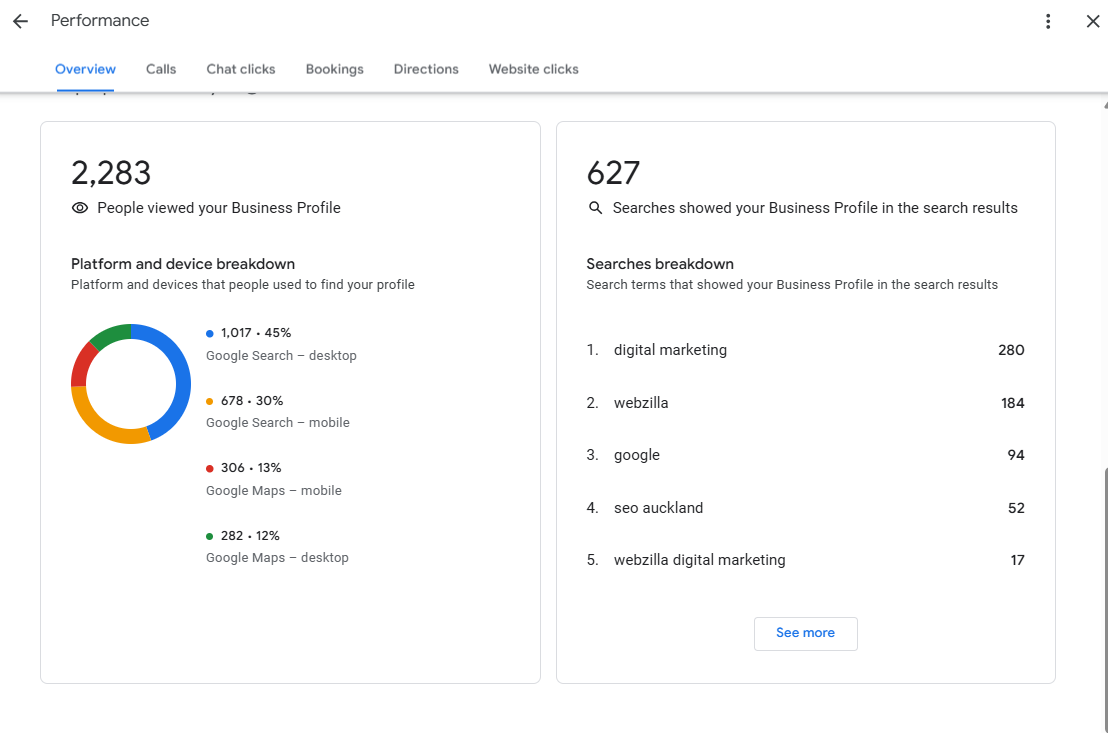
Integrating Google Analytics and UTM Tracking for Map Clicks
While GBP Insights provides valuable data, integrating Google Analytics allows for even deeper analysis—especially when tracking website visits originating from your Google Business Profile.
Step-by-Step Guide to UTM Tracking:
- Create a UTM-Tagged URL: Use Google’s Campaign URL Builder to generate a unique URL for your website link in GBP. For example:

- Update Your GBP Website Link: Log in to your Google Business Profile dashboard, edit your business information, and replace your website URL with the UTM-tagged version.
- Monitor Performance in Google Analytics: In Google Analytics, navigate to Acquisition > Campaigns to see traffic generated by your GBP listing. Analyse metrics such as sessions, bounce rate, and conversions to evaluate the quality of this traffic.
- Refine Your Strategy: Use these insights to identify which profile updates, posts, or offers drive the most engagement. Adjust your content and calls-to-action accordingly to maximise results.
Maximising the Value of Your Data
By combining GBP Insights with Google Analytics, you gain a holistic view of your local search performance. This empowers you to:
- Identify which keywords and actions drive the most valuable traffic
- Optimise your profile and website for higher conversion rates
- Justify your local SEO investments with clear, measurable results
Embracing a data-driven approach ensures your Google Map SEO strategy remains agile, effective, and aligned with your business goals.
The Impact of Google’s Algorithm Updates
As any seasoned digital marketer knows, Google likes to update its algorithms without much notice. Local SEO, including Maps, is no exception. The infamous “Vicinity update” shifted the focus towards proximity, meaning businesses closer to the searcher’s physical location took precedence.
In 2025, Google introduced further refinements to its local search algorithm, placing even greater emphasis on user intent and real-time engagement signals. Now, factors such as recent customer reviews, timely responses to queries, and up-to-date business information play a more significant role in determining which businesses appear at the top of local results. Google also enhanced its AI-driven understanding of local context, making it even more important for businesses to use natural language and conversational keywords that reflect how people actually search.
With each tweak, agility is vital. Businesses need to stay proactive: double-checking listings, refreshing content, and adapting their local keyword strategy to reflect how people are searching today. Regularly updating photos, posting timely offers, and encouraging customer interaction can help maintain visibility and relevance in this ever-evolving landscape. By staying ahead of these changes, businesses can ensure they remain competitive and continue to attract local customers through Google Maps.

Avoiding Common Pitfalls
A handful of missteps can sabotage even the most ambitious Map SEO efforts:
- Duplicate listings: These split your authority, confuse customers, and pull you backwards in rankings. Use Google’s support or third-party tools to merge or remove extras.
- Incorrect categories: A misaligned primary category can tank your visibility, so choose carefully based on your main service.
- Neglecting photos: Out-of-date, unattractive images stop customers in their tracks. Regularly update to reflect seasonal changes, new staff, or expanded offerings.
- Ignoring new reviews: Unanswered complaints set a poor tone and hurt both rankings and customer sentiment.
- Skipping regular audits: Information changes, competitors rise, and Google’s algorithms update. Setting a quarterly audit schedule keeps businesses agile and competitive.
Local Link Building and Citations
A solid web of local citations and links continues to pay dividends. Google interprets consistent, positive mentions of your business across trusted websites as a strong signal that your listing is accurate and authoritative.
Some strategies include:
- Joining local business associations and requesting backlinks from their member directories
- Sponsoring community events or youth sports teams (these often come with press and web mention opportunities)
- Publishing guest articles for local news sites or blogs
- Building partnerships with complementary businesses for cross-promotional posts or reviews
These approaches help to generate natural links and validate a local business’s presence, feeding positive signals back into Google Maps.
To maximise your impact, focus on building citations on reputable local directories, industry-specific platforms, and high-authority websites. Consistency is crucial—ensure your business name, address, and phone number (NAP) are identical across all listings. Inaccurate or conflicting information can undermine your credibility and hurt your rankings.
For a step-by-step approach to building effective citations, check out this comprehensive guide: How to Create Google Map Citations: The Ultimate Guide. This resource covers best practices, common pitfalls, and advanced tactics to help your business stand out in local search.
Remember, every quality citation and local backlink not only boosts your visibility but also strengthens your reputation within your community. Over time, these efforts compound, making your business the obvious choice for local customers searching on Google Maps.
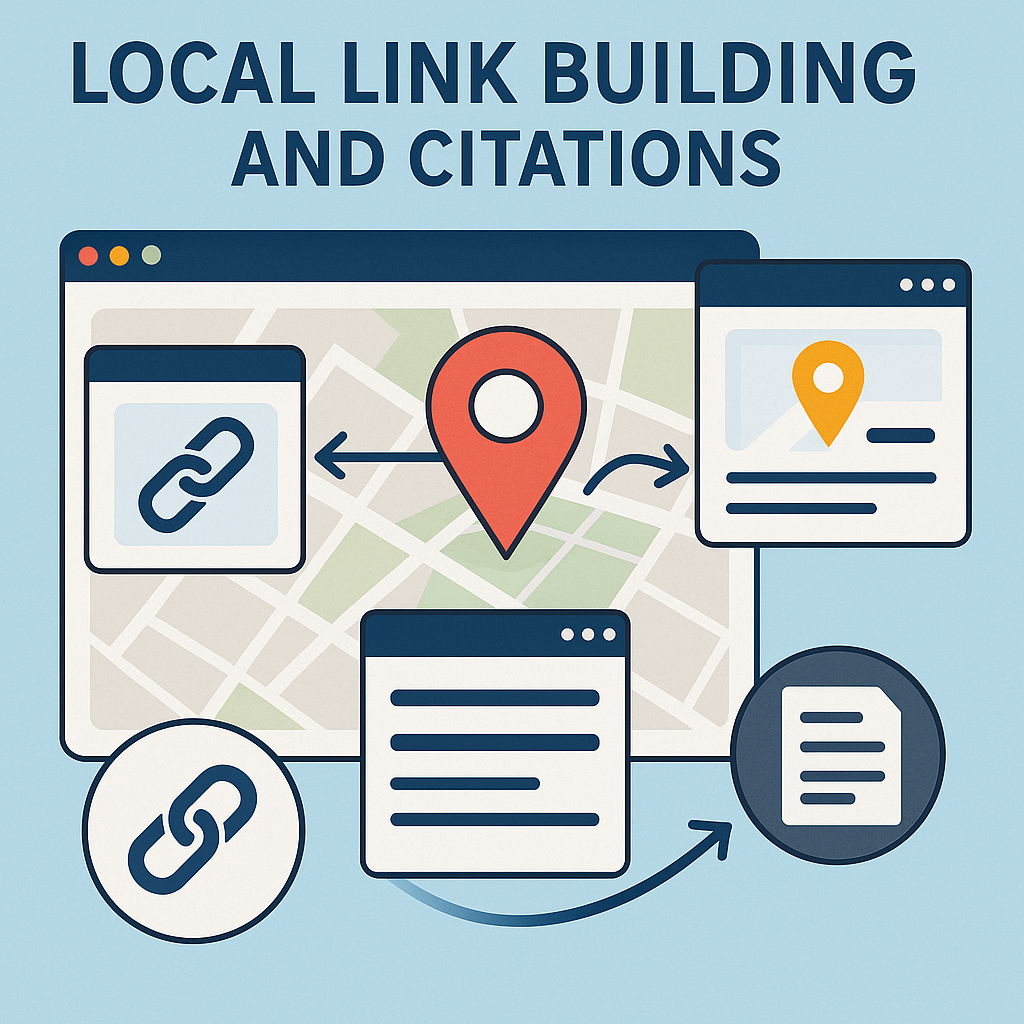
The Human Element
Ultimately, Map SEO is about connection: linking businesses with nearby customers at the moment they’re searching for a solution. This discipline rewards companies that cultivate genuine relationships, maintain transparency, and commit to a steady rhythm of engagement.
Trust, consistency, and a keen awareness of local needs sit at the heart of the best Map SEO strategies. While technology powers the process, authentic, people-first approaches drive long-term success.
By staying proactive and informed, businesses can flourish not just on the map—but in the real world where those map searches end.
Future Trends in Google Map SEO
As technology continues to evolve, so too does the landscape of Google Map SEO. Staying ahead means not only mastering today’s best practices but also anticipating the innovations that will shape local search tomorrow. Here’s a look at the emerging trends poised to redefine how businesses connect with local customers:
The Impact of AI on Local Search
Artificial intelligence is rapidly transforming the way Google interprets and delivers local search results. Google’s algorithms are becoming more sophisticated, leveraging AI to better understand user intent, context, and behaviour. This means search results are increasingly personalised—factoring in not just location, but also search history, preferences, and even real-time needs.
For businesses, this shift underscores the importance of natural, conversational language in business profiles and reviews. AI-powered features like automated Q&A, smart replies, and predictive search suggestions will reward businesses that provide clear, relevant, and up-to-date information. Embracing these tools can help you stay visible as Google’s local search becomes more intuitive and user-centric.
Augmented Reality (AR) and Immersive Navigation
Google Maps is already experimenting with augmented reality, allowing users to navigate city streets using their phone’s camera and overlaid digital directions. As AR becomes more mainstream, expect local search to become even more interactive. Businesses with rich visual content—such as 360-degree tours, immersive photos, or AR-enabled experiences—will stand out to users exploring their surroundings in real time.
To prepare, invest in high-quality imagery and consider creating virtual tours of your location. As AR features expand, these assets will not only enhance your listing but also provide a competitive edge in attracting foot traffic from tech-savvy customers.
Evolving Ranking Factors and New Features
Google’s local ranking factors are in constant flux. Recent updates have placed greater emphasis on real-time engagement signals, such as prompt responses to reviews, frequent profile updates, and active community involvement. Looking ahead, expect Google to further prioritise businesses that demonstrate authenticity, responsiveness, and a commitment to customer experience.
Additionally, new features—like advanced booking integrations, live inventory updates, and AI-driven recommendations—are likely to become standard. Businesses that quickly adopt and optimise these tools will be better positioned to capture local demand and build lasting customer relationships.
Preparing for the Future
To stay ahead in this dynamic environment:
- Regularly update your Google Business Profile with fresh content, offers, and multimedia.
- Encourage authentic, detailed reviews that use natural language and reflect real customer experiences.
- Explore emerging features such as AR tours, live chat, and AI-powered messaging.
- Monitor industry news and Google’s announcements to adapt your strategy as new tools and ranking factors emerge.
By embracing innovation and maintaining a proactive approach, your business can thrive in the next era of Google Map SEO—connecting with customers in ways that are more personal, engaging, and effective than ever before.

